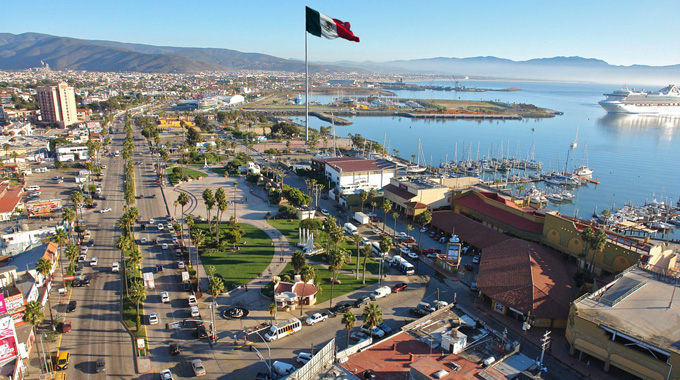Useful information

About Ensenada
The meeting will be held in the Ensenada campus of the UNAM's Instituto de Astronomia. This division of the Instituto is responsible for the operation of the Observatorio Astronomico Nacional en San Pedro Martir.
Spanish is the official language in Mexico, but since Ensenada is a touristic city, and close to the border, people will most likely speak English. Remember that the local currency is the Mexican Peso (MXN), which has a conversion rate of approximately 18 MXN for 1 USD. Dollars are accepted in most places as well, but Euros are mostly inconvenient, remember to plan ahead!
Note that, for electronic devices, the Mexican electrical outlets are the same as in the USA. The LOC will have only a limited supply of plug adaptors for the european computers.
Buses and taxis in Ensenada are an easy way to get around the city. We recommend to have cash at hand (preferably pesos), since most taxis don't take other forms of payment. We recommend Taxis Amarillos
The auditorium has advanced audiovisual equipment and teleconference facilities. Several meeting rooms, a terrace overlooking the ocean and other gathering places are also available for informal discussions.

Getting there
The easiest way to get to Ensenada is to fly to Tijuana or to San Diego, and to take land transport from there (also recommended for the amazing view on the scenic road from Tijuana/San Diego, that goes along the coastline). This can be achieved by car, bus or taxi from either city. Take note that you are required to go through the border security (immigration and customs) if arriving from the US.
Note that there are 3 very convenient hotels located in the Mexico City airport in case it is necessary to spend the night in Mexico City before taking the connecting flight to Tijuana. They are NH Collection, Camino Real, and Hilton.
Have a look at out guide for more information about getting to Ensenada from Tijuana or San Diego .

Hotels
The conference will take place within UNAM's Instituto de Astronomía. Several hotels are located nearby and are available to participants at a discounted rate. We have reserved a block of 40 rooms in the Hotel Coral y Marina, for the nights of July 15 (Sunday) through July 19 (Thursday); i.e.,checkout is on Friday, July 20. The hotel is completely booked starting on Friday night, July 21, due to the high season in Ensenada. This hotel is located across the highway from the meeting venue. Costs are 170 USD tax included/night but without Breakfast (single or double occupancy), or 190.17 USD tax and breakfast included (breakfast for 2 people). When reserving, please give the code name CONGRESO LIGO to get these rates. Other hotels include Hotel Punta Morro, Posada Rey del Sol, and Hotel Lucerna, and Hotel Cortez-Baja Inn. Some have confirmed availability through the dates of the conference
We advise those who are interested to reserve your rooms as soon as possible, since the conference takes place during high season and although we have some rooms on hold on the hotels, it's better to be safe!